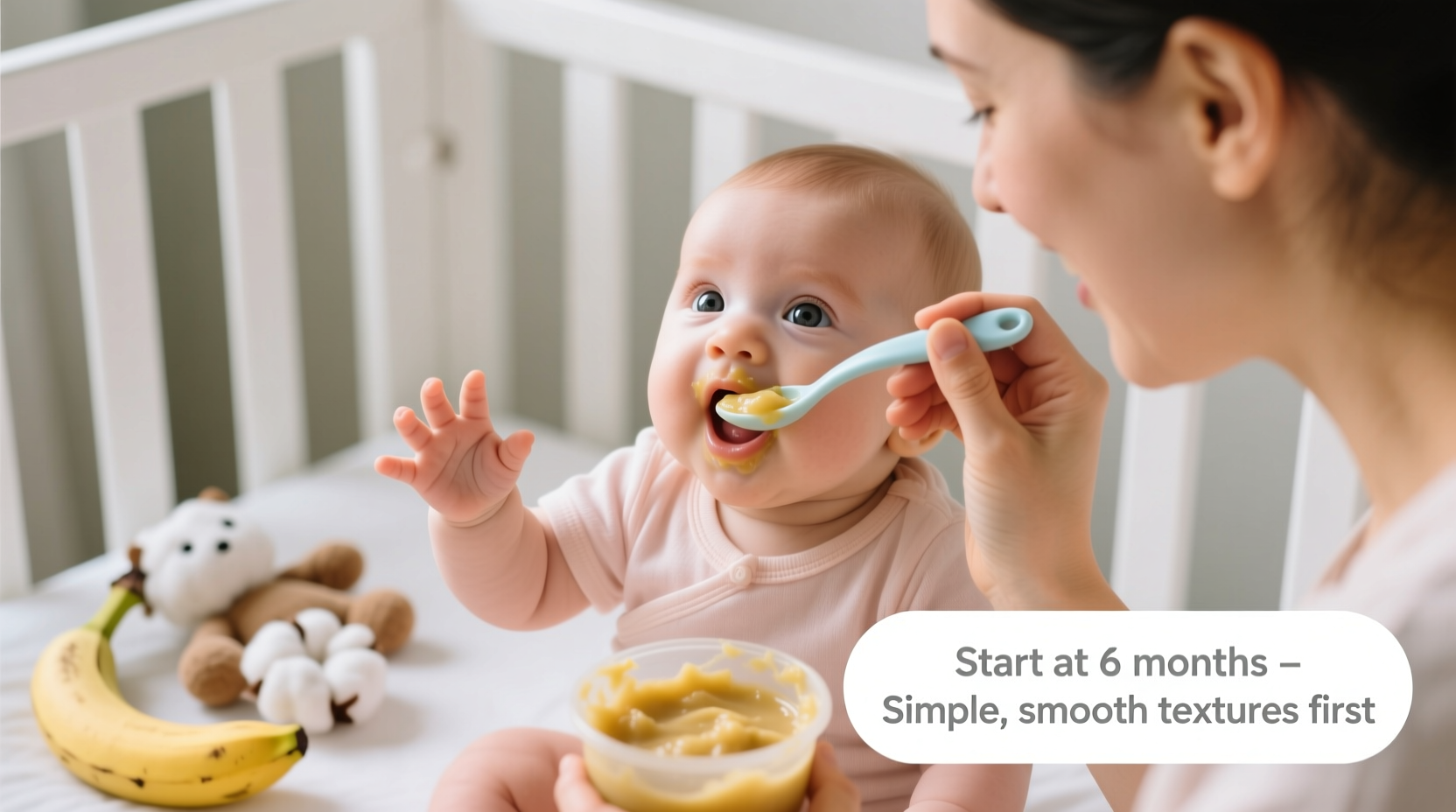Introducing solid foods marks a major milestone in your baby's development. Getting this transition right supports healthy growth, prevents feeding difficulties, and establishes positive eating habits for life. This evidence-based guide walks you through every step of how to start solid food for infants safely and successfully.
Recognizing Your Baby's Readiness Signs
Starting solids too early or too late can cause problems. The American Academy of Pediatrics (AAP) and World Health Organization (WHO) recommend exclusive breastfeeding or formula feeding for approximately the first six months. However, developmental readiness matters more than strict calendar dates.
| Developmental Sign | Present (Ready) | Not Present (Wait) |
|---|---|---|
| Head and neck control | Holds head steady when seated | Head wobbles significantly |
| Sitting ability | Sits with minimal support | Cannot maintain seated position |
| Tongue-thrust reflex | Has mostly disappeared | Pushes spoon out consistently |
| Food interest | Reaches for food, opens mouth | Ignores food, turns head away |
This developmental readiness checklist helps determine when to start solid foods for baby based on physical capabilities rather than age alone. According to CDC growth guidelines, only introduce solids when your infant demonstrates multiple readiness signs simultaneously.
Your Step-by-Step Introduction Timeline
The transition to solids happens gradually over several months. Follow this medically-reviewed progression:
Weeks 1-2: First Tastes (Around 6 Months)
Begin with single-ingredient, iron-fortified infant cereals or purees. The AAP emphasizes iron-rich first foods because babies' iron stores deplete around six months. Offer solids after milk feedings when your baby isn't extremely hungry but shows interest.
- Start with 1-2 teaspoons once daily
- Use a soft-tipped spoon to avoid gum injury
- Focus on smooth textures without chunks
- Watch for allergic reactions (rash, vomiting, diarrhea)
Weeks 3-8: Expanding Variety
Introduce one new food every 3-5 days to monitor for reactions. Current research from the National Institutes of Health shows early allergen introduction (peanuts, eggs) may reduce allergy risk when done safely under pediatric guidance.
Recommended progression:
- Iron-fortified rice or oat cereal (mixed with breast milk/formula)
- Single-ingredient fruit purees (apples, pears, bananas)
- Single-ingredient vegetable purees (sweet potatoes, carrots)
- Mashed avocado or banana (no cooking required)

Safe Feeding Practices Every Parent Must Know
Proper technique prevents choking and supports positive feeding experiences. The American Academy of Pediatrics reports that improper feeding techniques contribute to 30% of early feeding difficulties.
Essential Safety Guidelines
- Never prop bottles - increases choking risk by 40% according to CDC data
- Maintain eye contact during feeding to monitor swallowing
- Hold baby at 45-degree angle to prevent aspiration
- Avoid honey until after 12 months due to botulism risk
- Test food temperature on your wrist before feeding
When to Stop and Consult Your Pediatrician
Certain situations require professional guidance before continuing solids:
- Consistent vomiting after feedings
- Difficulty swallowing or coughing while eating
- No interest in food after multiple attempts
- Symptoms of food allergy (hives, facial swelling, breathing difficulties)
- Family history of food allergies or digestive disorders
Troubleshooting Common Challenges
Most feeding difficulties have simple solutions. Understanding these common scenarios helps you respond appropriately:
"My baby refuses to eat from a spoon"
This is normal initially. Try these approaches:
- Let baby touch and explore the spoon first
- Start with expressed breast milk/formula on the spoon
- Offer solids when baby is calm but alert (not overly hungry)
- Use a shallow spoon to minimize gum discomfort
"My baby seems constipated after starting solids"
Dietary changes often affect digestion. Help your baby by:
- Increasing water intake (1-2 oz between feedings)
- Adding pureed pears or prunes to the diet
- Gentle bicycle leg movements to stimulate digestion
- Consulting your pediatrician before using remedies
What Comes Next: Texture Progression
By 8-10 months, most babies transition to more textured foods. This progression supports oral motor development and prevents feeding aversions later.
Texture timeline:
- 6-7 months: Smooth purees (no lumps)
- 7-8 months: Thicker mashed foods with soft lumps
- 8-9 months: Soft finger foods (avocado chunks, cooked carrot sticks)
- 9-12 months: Family foods with modified textures
Remember that each baby develops at their own pace. The NHS emphasizes that responsive feeding—following your baby's hunger and fullness cues—is more important than strict schedules. Signs your baby is full include turning head away, closing mouth, or pushing the spoon away.
Practical Tips for Stress-Free Solid Food Introduction
Make this transition enjoyable for both of you with these pediatrician-approved strategies:
- Start small - Begin with one daily feeding and gradually increase
- Follow the 3-5 day rule when introducing new foods to monitor reactions
- Keep a food journal tracking new foods and any reactions
- Make mealtime social - Eat together as a family when possible
- Embrace the mess - Learning to eat is a sensory experience
Research published in the Journal of Pediatrics shows that babies introduced to a variety of flavors early develop more accepting eating habits. Don't be discouraged if your baby initially rejects new foods—most require 10-15 exposures before acceptance.











 浙公网安备
33010002000092号
浙公网安备
33010002000092号 浙B2-20120091-4
浙B2-20120091-4